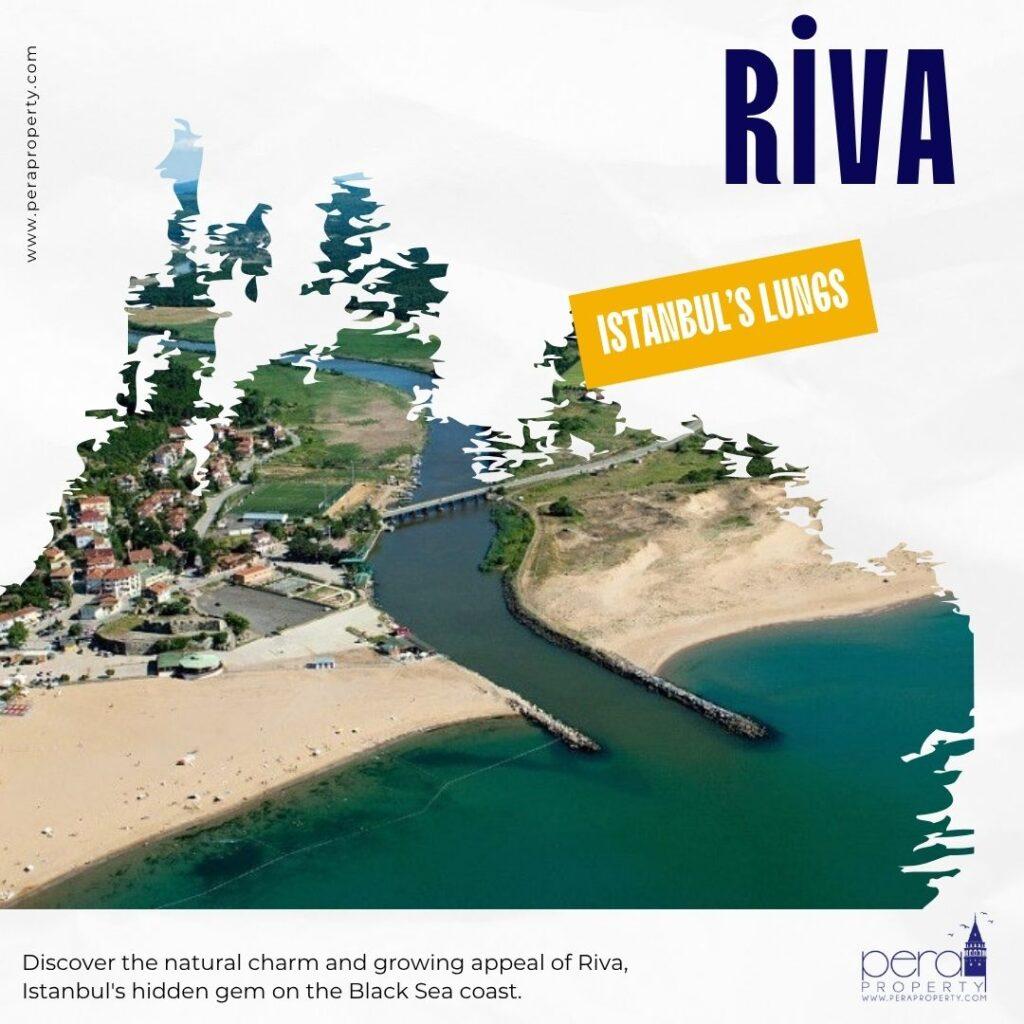For those who believe Istanbul is all crowds, concrete, and chaos, there exists a counterpoint just 45 minutes north of the Bosphorus bridges. Riva, a coastal village tucked into the Black Sea shoreline of Beykoz, offers a version of Istanbul that is softer, greener, and startlingly wild. Here, the forests still speak, and the sea tells a quieter story.
Also known by its historic name Çayağzı, Riva sits along the banks of the Riva Stream—a meandering freshwater ribbon that curls through dense woodland before reaching the Black Sea. It is not just a geographical feature. The creek defines the land around it. Estuarine in places, wild in others, it is framed by trees that lean over its banks and hills that guard its course.
Visitors can trace the river by foot, boat, or kayak, passing spots where reeds bow in the wind and birds rest in shadow. In spring, the banks bloom in soft hues. In summer, the trees offer refuge from heat. The result is a landscape that is not merely rural but truly restorative.
The forests are more than scenery. They are a living buffer between the built city and the untouched north. Much of Riva is enveloped in mature woodland, with large canopies providing shade and silence. Within this expanse sits Elmasburnu Nature Park, a sanctuary of pines and picnic areas where the forest reaches almost to the shoreline.
Riva’s coastline is extraordinarily long, as is the case for much of the north-west Black sea coast. The main public beach stretches nearly three kilometres. On calm days, the water is clear and welcoming, and winter months bring huge dark waves, hence the name “Karadeniz” or Black Sea. It is a beach that belongs to the land rather than the tourist economy.
What makes Riva unique is the balance it strikes. While it remains rustic in character, it is now closer to Istanbul’s urban heart than ever before. The opening of the Yavuz Sultan Selim Bridge, also known as the 3rd Bridge, has rewritten the logistics of living in the north. This massive infrastructure project not only connects Europe to Asia via the northern belt but links Riva directly to arterial highways that skirt congestion and reduce travel times. The route details can be reviewed on the official Kuzey Marmara Highway page. Despite this heavy duty 8-lane motorway, planning permission in the region remains strictly controlled – no high rises can be found here, and the maximum height of even apartment buildings are kept at 4 stories.
Leaving Riva, you can join the North Marmara highway and cross the bridge within about 6 minutes. From there, it is a short drive to the new award winning international airport, the financial centers of Levent, or even to the coastal charm of Sarıyer on the European side. The roads are broad and fast, built for scale. You are not navigating sleepy village streets but a well maintained transport spine.
Public transport is also making inroads. The IETT’s 137 bus connects Riva to Kavacık and beyond, giving even non-drivers a degree of mobility. While it is still car-preferred territory, the presence of state-funded transit options speaks volumes about how the region is being pulled into the city’s orbit. You can explore the bus routes in detail via IETT’s official site.
There is a reason why developers have turned their gaze toward this forested peninsula. But for buyers, the appeal goes deeper than investment metrics. Riva offers what few places in Istanbul can still provide: clean air, open sky, natural topography, and silence. And it does so without exile. One can swim in the Black Sea, picnic under oaks, and still be at a meeting in Maslak within the hour. Riva is not the edge of the map. It is a bridge between two ways of living.
For those searching for a place that feels like retreat yet functions like a residence, Riva may be Istanbul’s final frontier. And as development increases, that frontier is fast becoming its most valuable threshold.
